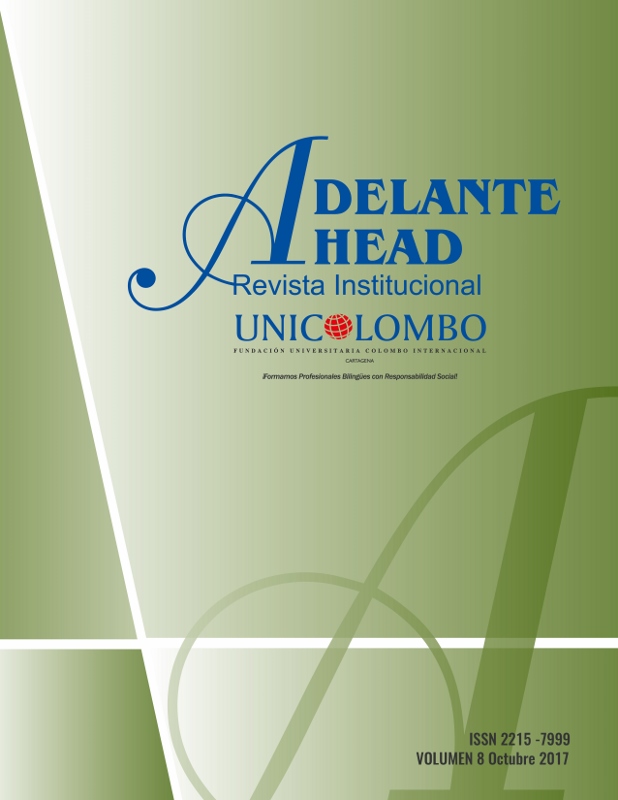Entrepreneur teaching experience: Applying material design principles in an innovation experience with the united nations development programme
Resumen
Abstract: This experience reveals a case study where a group of students from a Bachelor of Science in Education supported a group of entrepreneurs with lack of pedagogical and material knowledge basis with their product called “La caja sorpresa”. The objective was to engage students in literacy activities, through the design and implementation of a set of pedagogical and material basis such as principles, techniques, and strategies in the teaching process. In order to achieve this goal, it was necessary the financial support from the United Nations Development Programme (UNDP) and South Korean government in order to develop a proposal to help the entrepreneurs. The main result was the necessity that the entrepreneurs apply approaches such as telling stories and scaffolding, with its strategies and techniques respectively to improve students’ motivation towards literacy.
Keywords: literacy, telling stories, scaffolding, innovationDescargas
Citas
References
Alvermann, D. (2003). Seeing themselves as capable and engaged readers: Adolescent and remediated instruction. Naperville: Learning Point Associates.
Cameroon, L. (2001). Teaching languages to young learners. Cambridge: Cambridge University Press.
Downing, J. (2005). Teaching literacy to students with significant disabilities. Thousand Oaks: Sage.
Ellis, R. (1995). The study of second language acquisition. Oxford: Oxford University Press.
Goodwyn, A. (2009). English in the digital age: Information and communications technology and the teaching of English. London/New York: Cassell.
Kemeh, M. (2015). Using solo drama to make the teaching of social studies engaging for students. Procedia-Social and Behavioral Sciences, (174), p. 2245-2252.
Keshavarzi, A. (2012). Use of literature in teaching English. Procedia-Social and Behavioral Sciences, (46), p. 554-559.
Kim, S. (2013). Comparison of task-based and storytelling-based English classroom interaction in Korean elementary schools. English Teaching, 68(3), p. 51-83.
Kliewer, C., & Biklen, D. (2007). Enacting literacy: Local understanding, significant disability, and a new frame for educational opportunity. Teachers College Record, 109(12), p. 2579-2600.
Lee, C. (2005). Bridging home and school literacies: Models for culturally responsive teaching: A case for African-American English. In: J. Flood, B. Heath, & D. Lapp, Handbook of research on teaching literacy through the communicative and visual arts (pas. 334-345). Mahwah: Erlbaum.
Malderez, A. (2010). Stories in ELT: Telling tales in school. Procedia-Social and Behavioral Sciences, (3), p.7-13.
Meier, T. (2003). "Why can't she remember that?" The importance of storybook reading in multilingual, multicultural classrooms. The Reading Teacher, 57(3), 242-252.
Moon, J. (2000). Children learning English. Oxford: MacMillan.
National Endowment for the Arts. (2007). To Read or Not to Read a Question of National Consequence (Research Report # 47). Washington, DC: National Endowment for the Arts.
Norton, D. (2011). Through the eyes of a child: An introduction to children's literature. Boston: Pearson Education.
Powell, R., McIntyre, E., & Rightmyer, E. (2006). Sustaining pupil engagement in literacy lessons. Journal of Early Childhood Literacy, 6(1), p. 5-31.
Spolsky, B. (1998). Conditions for second language learning. Oxford: Oxford University Press.
Stoke, W. (1998). Defining literacy. Currents in Literacy 1.
UNESCO. (1957). World illiteracy at mid-century: a statistical study. Paris: UNESCO publication.
UNESCO. (2008). International Literacy Statistics: A Review of Concepts, Methodology and Current Data. Montreal: UNESCO Publication.
Wright, A. (2008). Storytelling with children. Oxford: Oxford University Press.
Descargas
Publicado
Cómo citar
Número
Sección
Licencia
Derechos de autor 2019 Lizeth Vergara Cabarcas, Lewis Polo Espinosa.

Esta obra está bajo una licencia internacional Creative Commons Atribución 4.0.
Creative Commons Atribución/Reconocimiento-NoComercial-CompartirIgual 4.0 Licencia Pública Internacional — CC BY-NC-SA 4.0








